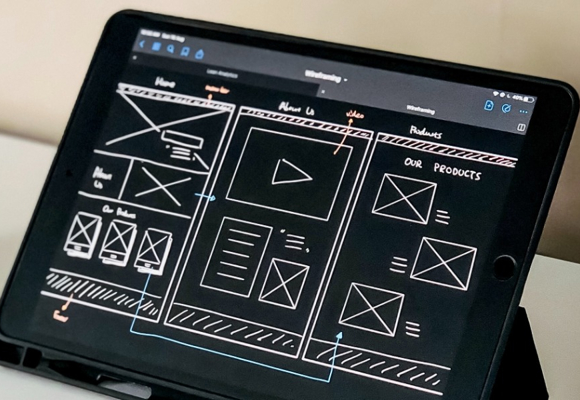April 21, 2023
We all use our smartphones to access websites on an almost daily basis. This new digital reality means that having a mobile-friendly website for your business is essential! The majority of web traffic is coming from mobile devices, making it more important than ever to ensure that your website is optimized for these users.
In this article, we'll discuss what mobile friendliness actually means for your website, why it's important, and how to ensure your site is mobile-friendly. We'll also take a closer look at using tools like Google Lighthouse to improve your website's mobile-friendliness.
What does mobile friendliness even mean?

You could probably guess that mobile-friendliness refers to how well a website displays and functions on mobile devices, such as smartphones and tablets. A mobile-friendly website is designed by adjusting to the smaller screen size, touchscreen functionality, and slower internet speeds that are typically associated with mobile devices.
Mobile-friendly websites are also intentionally made with responsive design elements. Responsive design allows the site to adjust its layout to fit the screen size of the device being used. This helps ensure that the website looks good and functions properly, no matter the size of the screen being used to access it!
Why is mobile friendliness important?

The main reason why mobile friendliness has become so important is obvious, but can’t be understated: the majority of web traffic comes from mobile devices. If your website isn’t adapted to be mobile-friendly, you're potentially missing out on more than half of your potential audience!
Mobile friendliness is also incredibly important for search engine optimization (SEO). Major search engines use mobile-friendliness as a major ranking factor in their search algorithm. Websites that provide an excellent user experience for users on mobile devices are more likely to rank higher in Google's search results, getting more clicks and traffic to your business!
It’s also just a good idea to adapt to the way people are getting information these days– a mobile-friendly site is easy to navigate, loads quickly, and is visually appealing. This is what consumers are demanding during the digital age of information. A positive user experience can lead to increased engagement, lower bounce rates, and higher conversion rates for your brand.
5 easy ways to ensure your site is mobile friendly
1. Use responsive design
As mentioned earlier, responsive design is essential for a mobile-friendly website. This means that your website should adjust its layout to fit the screen size of the device being used.
2. Keep it simple
Mobile users have a limited attention span, so it's important to keep your website simple and easy to navigate. Use clear and concise language, and avoid cluttering your website with too many images or content that doesn’t have a specific purpose. Be intentional about what you include!
3. Optimize your images
Large images can slow down your website, which can be frustrating for people accessing the site on their phones while on the go. It can also make your site rank lower on search engines. Make sure to optimize your images for the web by compressing them and reducing their file size.
4. Use a readable, mobile-friendly font
Some fonts are difficult to read on mobile devices. Choose a font that is easy to read on smaller screens, such as Arial or Verdana. These fonts should also be easily size-adaptable, to accommodate users with disabilities.
5. Test your website to make sure it works!
Use tools such as Google Lighthouse to test your website's mobile-friendliness. This will help you identify any issues that need to be addressed.
How to use Google Lighthouse
Google Lighthouse is a tool that can help you test your website's mobile-friendliness. It provides a detailed report that identifies areas where your website can be improved in terms of performance, accessibility, and SEO.
To use Google Lighthouse, simply enter the URL of your website. Google Lighthouse will then analyze your website and provide you with a report that includes recommendations for improving your website's mobile-friendliness.
Some of the recommendations that Google Lighthouse might provide include optimizing images, reducing the size of your website's CSS and JavaScript files, and ensuring you’re following best practices. This can be a great tool to get started on adapting your website for the mobile world.


